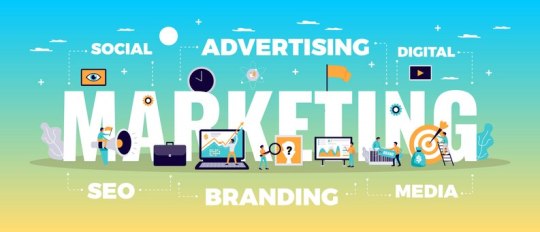#Digital Power Utility Market share
Text
Digital Power Utility Market - Global Growth, Share, Trends, Demand and Analysis Report Forecast 2022-2029
Of late, digital technologies such as Internet of Things (IoT) has left a significant impact across the spectrum of industries. To this end, the power utility sector is no exception. IoT has enabled power grids to work more efficiently, resulting in improved performance and productivity enhancements. Notably, adoption of IoT has enabled companies in power utility industry to optimise their processes to accomplish the sustainable development goals. Such a landscape has paved the way for incorporation of digital power utility solutions. These solutions facilitate systematic distribution of power with real-time management of assets. Leveraging cloud and IoT, these solutions are becoming more advanced and sophisticated, resulting in their paced adoption. Against this backdrop, the digital power utility market is projected to experience exponential growth.
For More Industry Insights Read: https://www.fairfieldmarketresearch.com/report/digital-power-utility-market
Growing Energy Demands Amid Surging Urbanisation to Augur Well for Digital Power Utility Market
A rampant rise in urbanization has put forth a substantial demand for energy and power. Considering the rapid depletion of fossil fuels, companies are increasingly opting for renewable energy sources. Meanwhile, the adoption of renewables in power utility can significantly help in curtailing the carbon emissions. Therefore, governments around the world are promoting the use of renewable energy sources such as wind and solar to meet the growing energy requirements. These solutions are also expected to enhance the storage, flexibility, and security of processes involved in power utility. Furthermore, cloud-enabled applications can further optimise the delivery process. This created tremendous headways for the global digital power utility market to flourish in the upcoming years.
Soaring Demand for Hardware in Next-Gen Equipment to Boost Market Growth
The adoption of digital devices across the power generation, transmission, and distribution industries is consistently increasing. This is mainly accredited to their provided benefits such as improved plant productivity, reliability, and protection. As a result, the demand for hardware has surged at a record pace. Its demand is further augmented by the increased adoption of hardware in EV charging and smart metering is further fueling the demand. Hardware is being extensively used in next-generation equipment. Such digital systems provide the business and the consumer with a real-time, accurate and precise details of power consumption. This in turn is anticipated to fuel the overall digital power utility market expansion.
Favourable Government Policies to Place Asia Pacific as Key Regional Market
The Asia Pacific region is expected to exhibit lucrative growth opportunities for the digital power utility market. This is due to growing energy consumption and favourable government policies in the region. Moreover, various countries in the region are experiencing an inadequate distribution and transmission of power. Therefore, emerging economies in the region are focusing on developing transmission networks. This in turn pushes for the adoption of digital power utility solutions. The cumulative forces of these factors are projected to propel the growth of the digital power utility market in the region.
Prominent Market Players
Some of the major players in the digital power utility market include Cognizant Technology Solutions, ABB Ltd., Microsoft Corporation, GE, IBM Corporation, Siemens AG, Infosys Ltd, Wipro Ltd and Accenture.
For More Information Visit: https://www.fairfieldmarketresearch.com/report/digital-power-utility-market
About Us
Fairfield Market Research is a UK-based market research provider. Fairfield offers a wide spectrum of services, ranging from customized reports to consulting solutions. With a strong European footprint, Fairfield operates globally and helps businesses navigate through business cycles, with quick responses and multi-pronged approaches. The company values an eye for insightful take on global matters, ably backed by a team of exceptionally experienced researchers. With a strong repository of syndicated market research reports that are continuously published & updated to ensure the ever-changing needs of customers are met with absolute promptness.
#digital power utility#digital power utility market#digital power utility market trends#digital power utility market size#digital power utility market share#digital utility#electric utility#power and utilities industry#Power and utilities#power industry#utilities industry#energy and utilities Industry#fairfield market research
2 notes
·
View notes
Text
#Digital Power Utility Market#Digital Power Utility Market size#Digital Power Utility Market share#Digital Power Utility Market trends#Digital Power Utility Market analysis#Digital Power Utility Market forecast
0 notes
Text
The Expansive World of Altcoins: Exploring the Diversity Beyond Bitcoin

Bitcoin, the original cryptocurrency, has long dominated headlines and market discussions. However, the world of digital currencies is vast and diverse, with thousands of alternative coins, or altcoins, each offering unique features and value propositions. Altcoins encompass a broad range of projects, from utility tokens and stablecoins to meme coins and more. This article delves into the rich ecosystem of altcoins, highlighting their significance, various types, and the innovative projects that make up this vibrant space, including a mention of Sexy Meme Coin.
Understanding Altcoins
The term "altcoin" refers to any cryptocurrency that is not Bitcoin. These coins were developed to address various limitations of Bitcoin or to introduce new features and use cases. Altcoins have proliferated since the creation of Bitcoin in 2009, each aiming to offer something different, whether it be improved transaction speeds, enhanced privacy features, or specific utility within certain ecosystems.
Categories of Altcoins
Utility Tokens: Utility tokens provide users with access to a specific product or service within a blockchain ecosystem. Examples include Ethereum's Ether (ETH), which is used to power applications on the Ethereum network, and Chainlink's LINK, which is used to pay for services on the Chainlink decentralized oracle network.
Stablecoins: Stablecoins are designed to maintain a stable value by being pegged to a reserve of assets, such as fiat currency or commodities. Tether (USDT) and USD Coin (USDC) are popular stablecoins pegged to the US dollar, offering the benefits of cryptocurrency without the volatility.
Security Tokens: Security tokens represent ownership in a real-world asset, such as shares in a company or real estate. They are subject to regulatory oversight and are often seen as a bridge between traditional finance and the blockchain world.
Meme Coins: Meme coins are a playful and often humorous take on cryptocurrency, inspired by internet memes and cultural trends. While they may start as jokes, some have gained significant value and community support. Dogecoin is the most famous example, but many others, like Shiba Inu and Sexy Meme Coin, have also captured the public's imagination.
Privacy Coins: Privacy coins focus on providing enhanced privacy features for transactions. Monero (XMR) and Zcash (ZEC) are notable examples, offering users the ability to transact anonymously and protect their financial privacy.
The Appeal of Altcoins
Altcoins offer several advantages over Bitcoin, including:
Innovation: Many altcoins introduce new technologies and features, driving innovation within the cryptocurrency space. For example, Ethereum introduced smart contracts, enabling decentralized applications (DApps) and decentralized finance (DeFi) platforms.
Specialization: Altcoins often serve specific niches or industries, providing targeted solutions that Bitcoin cannot. For instance, Ripple (XRP) focuses on facilitating cross-border payments, while Filecoin (FIL) aims to create a decentralized storage network.
Investment Opportunities: The diverse range of altcoins presents numerous investment opportunities. Investors can diversify their portfolios by investing in projects with different use cases and growth potentials.
Notable Altcoins in the Market
Ethereum (ETH): Ethereum is the second-largest cryptocurrency by market capitalization and has become the backbone of the DeFi and NFT (Non-Fungible Token) ecosystems. Its smart contract functionality allows developers to create decentralized applications, leading to a thriving ecosystem of financial services, games, and more.
Cardano (ADA): Cardano is a blockchain platform focused on sustainability, scalability, and transparency. It uses a proof-of-stake consensus mechanism, which is more energy-efficient than Bitcoin's proof-of-work. Cardano aims to provide a more secure and scalable infrastructure for the development of decentralized applications.
Polkadot (DOT): Polkadot is designed to enable different blockchains to interoperate and share information. Its unique architecture allows for the creation of "parachains," which can operate independently while still benefiting from the security and connectivity of the Polkadot network.
Chainlink (LINK): Chainlink is a decentralized oracle network that provides real-world data to smart contracts on the blockchain. This functionality is crucial for the operation of many DeFi applications, making Chainlink a vital component of the blockchain ecosystem.
Sexy Meme Coin: Among the meme coins, Sexy Meme Coin stands out for its combination of humor and innovative tokenomics. It offers a decentralized marketplace where users can buy, sell, and trade memes as NFTs (Non-Fungible Tokens), rewarding creators for their originality. Learn more about Sexy Meme Coin at Sexy Meme Coin.
The Future of Altcoins
The future of altcoins looks promising, with continuous innovation and increasing adoption across various industries. As blockchain technology evolves, we can expect altcoins to introduce new solutions and disrupt traditional systems. However, the market is also highly competitive, and not all projects will succeed. Investors should conduct thorough research and due diligence before investing in any altcoin.
Conclusion
Altcoins represent a dynamic and diverse segment of the cryptocurrency market. From utility tokens and stablecoins to meme coins and privacy coins, each category offers unique features and potential benefits. Projects like Ethereum, Cardano, Polkadot, and Chainlink are leading the way in innovation, while niche coins like Sexy Meme Coin add a layer of cultural relevance and community engagement. As the cryptocurrency ecosystem continues to grow, altcoins will play a crucial role in shaping the future of digital finance and blockchain technology.
For those interested in the playful and innovative side of the altcoin market, Sexy Meme Coin offers a unique and entertaining platform. Visit Sexy Meme Coin to explore this exciting project and join the community.
107 notes
·
View notes
Text
Generative AI was always unsustainable, always dependent on reams of training data that necessitated stealing from millions of people, its utility vague and its ubiquity overstated. The media and the markets have tolerated a technology that, while not inherently bad, was implemented in a way so nefariously and wastefully that it necessitated theft, billions of dollars in cash, and double-digit percent increases in hyper scalers’ emissions.
The desperation for the tech industry to “have something new” has led to such ruinous excess, and if this bubble collapses, it will be a result of a shared myopia in both big tech dimwits like Satya Nadella and Sundar Pichai, and Silicon Valley power players like Reid Hoffman, Sam Altman, Brian Chesky, and Marc Andreessen. The people propping this bubble up no longer experience human problems, and thus can no longer be trusted to solve them.
This is a story of waste, ignorance and greed. Of being so desperate to own the future but so disconnected from actually building anything. This arms race is a monument to the lack of curiosity rife in the highest ranks of the tech industry. They refuse to do the hard work — to create, to be curious, to be excited about the things you build and the people they serve — and so they spent billions to eliminate the risk they even might have to do any of those things.
Had Sundar Pichai looked at Microsoft’s investment in OpenAI and said “no thanks” — as he did with the metaverse — it’s likely that none of this would’ve happened. But a combined hunger for growth and a lack of any natural predators means that big tech no longer knows how to make competitive, useful products, and thus can only see what their competitors are doing and say “uhhh, yeah! That’s what the big thing is!”
Mark Zuckerberg was once so disconnected from Meta’s work on AI that he literally had no idea of the AI breakthrough Sundar Pichai complimented him about in a meeting mere months before Meta’s own obsession with AI truly began. None of these guys have any idea what’s going on! And why are they having these chummy meetings? These aren’t competitors! They’re co-conspirators!
These companies are too large, too unwieldy, too disconnected, and do too much. They lack the focus that makes a truly competitive business, and lack a cohesive culture built on solving real human or business problems. These are not companies built for anything other than growth — and none of them, not even Apple, have built something truly innovative and life-changing in the best part of a decade, with the exception, perhaps, of contactless payments. These companies are run by rot economists and have disconnected, chaotic cultures full of petty fiefdoms where established technologists are ratfucked by management goons when they refuse to make their products worse for a profit.
There is a world where these companies just make a billion dollars a quarter and they don't have to fire people every quarter, one where these companies actually solve real problems, and make incredibly large amounts of money for doing so. The problem is that they’re greedy, and addicted to growth, and incapable of doing anything other than following the last guy who had anything approaching a monetizable idea, the stench of Jack Welch wafting through every boardroom.
5 August 2024
42 notes
·
View notes
Text
Pluto in Aquarius: Brace for a Business Revolution (and How to Ride the Wave)
The Aquarian Revolution
Get ready, entrepreneurs and financiers, because a seismic shift is coming. Pluto, the planet of transformation and upheaval, has just entered the progressive sign of Aquarius, marking the beginning of a 20-year period that will reshape the very fabric of business and finance. Buckle up, for this is not just a ripple – it's a tsunami of change. Imagine a future where collaboration trumps competition, sustainability dictates success, and technology liberates rather than isolates. Aquarius, the sign of innovation and humanitarianism, envisions just that. Expect to see:
Rise of social impact businesses
Profits won't be the sole motive anymore. Companies driven by ethical practices, environmental consciousness, and social good will gain traction. Aquarius is intrinsically linked to collective well-being and social justice. Under its influence, individuals will value purpose-driven ventures that address crucial societal issues. Pluto urges us to connect with our deeper selves and find meaning beyond material gains. This motivates individuals to pursue ventures that resonate with their personal values and make a difference in the world.
Examples of Social Impact Businesses
Sustainable energy companies: Focused on creating renewable energy solutions while empowering local communities.
Fair-trade businesses: Ensuring ethical practices and fair wages for producers, often in developing countries.
Social impact ventures: Addressing issues like poverty, education, and healthcare through innovative, community-driven approaches.
B corporations: Certified businesses that meet rigorous social and environmental standards, balancing profit with purpose.
Navigating the Pluto in Aquarius Landscape
Align your business with social impact: Analyze your core values and find ways to integrate them into your business model.
Invest in sustainable practices: Prioritize environmental and social responsibility throughout your operations.
Empower your employees: Foster a collaborative environment where everyone feels valued and contributes to the social impact mission.
Build strong community partnerships: Collaborate with organizations and communities that share your goals for positive change.
Embrace innovation and technology: Utilize technology to scale your impact and reach a wider audience.
Pluto in Aquarius presents a thrilling opportunity to redefine the purpose of business, moving beyond shareholder value and towards societal well-being. By aligning with the Aquarian spirit of innovation and collective action, social impact businesses can thrive in this transformative era, leaving a lasting legacy of positive change in the world.
Tech-driven disruption
AI, automation, and blockchain will revolutionize industries, from finance to healthcare. Be ready to adapt or risk getting left behind. Expect a focus on developing Artificial Intelligence with ethical considerations and a humanitarian heart, tackling issues like healthcare, climate change, and poverty alleviation. Immersive technologies will blur the lines between the physical and digital realms, transforming education, communication, and entertainment. Automation will reshape the job market, but also create opportunities for new, human-centered roles focused on creativity, innovation, and social impact.
Examples of Tech-Driven Disruption:
Decentralized social media platforms: User-owned networks fueled by blockchain technology, prioritizing privacy and community over corporate profits.
AI-powered healthcare solutions: Personalized medicine, virtual assistants for diagnostics, and AI-driven drug discovery.
VR/AR for education and training: Immersive learning experiences that transport students to different corners of the world or historical periods.
Automation with a human touch: Collaborative robots assisting in tasks while freeing up human potential for creative and leadership roles.
Navigating the Technological Tsunami:
Stay informed and adaptable: Embrace lifelong learning and upskilling to stay relevant in the evolving tech landscape.
Support ethical and sustainable tech: Choose tech products and services aligned with your values and prioritize privacy and social responsibility.
Focus on your human advantage: Cultivate creativity, critical thinking, and emotional intelligence to thrive in a world increasingly reliant on technology.
Advocate for responsible AI development: Join the conversation about ethical AI guidelines and ensure technology serves humanity's best interests.
Connect with your community: Collaborate with others to harness technology for positive change and address the potential challenges that come with rapid technological advancements.
Pluto in Aquarius represents a critical juncture in our relationship with technology. By embracing its disruptive potential and focusing on ethical development and collective benefit, we can unlock a future where technology empowers humanity and creates a more equitable and sustainable world. Remember, the choice is ours – will we be swept away by the technological tsunami or ride its wave towards a brighter future?
Decentralization and democratization
Power structures will shift, with employees demanding more autonomy and consumers seeking ownership through blockchain-based solutions. Traditional institutions, corporations, and even governments will face challenges as power shifts towards distributed networks and grassroots movements. Individuals will demand active involvement in decision-making processes, leading to increased transparency and accountability in all spheres. Property and resources will be seen as shared assets, managed sustainably and equitably within communities. This transition won't be without its bumps. We'll need to adapt existing legal frameworks, address digital divides, and foster collaboration to ensure everyone benefits from decentralization.
Examples of Decentralization and Democratization
Decentralized autonomous organizations (DAOs): Self-governing online communities managing shared resources and projects through blockchain technology.
Community-owned renewable energy initiatives: Local cooperatives generating and distributing clean energy, empowering communities and reducing reliance on centralized grids.
Participatory budgeting platforms: Citizens directly allocate local government funds, ensuring public resources are used in line with community needs.
Decentralized finance (DeFi): Peer-to-peer lending and borrowing platforms, bypassing traditional banks and offering greater financial autonomy for individuals.
Harnessing the Power of the Tide:
Embrace collaborative models: Participate in co-ops, community projects, and initiatives that empower collective ownership and decision-making.
Support ethical technology: Advocate for blockchain platforms and applications that prioritize user privacy, security, and equitable access.
Develop your tech skills: Learn about blockchain, cryptocurrencies, and other decentralized technologies to navigate the future landscape.
Engage in your community: Participate in local decision-making processes, champion sustainable solutions, and build solidarity with others.
Stay informed and adaptable: Embrace lifelong learning and critical thinking to navigate the evolving social and economic landscape.
Pluto in Aquarius presents a unique opportunity to reimagine power structures, ownership models, and how we interact with each other. By embracing decentralization and democratization, we can create a future where individuals and communities thrive, fostering a more equitable and sustainable world for all. Remember, the power lies within our collective hands – let's use it wisely to shape a brighter future built on shared ownership, collaboration, and empowered communities.
Focus on collective prosperity
Universal basic income, resource sharing, and collaborative economic models may gain momentum. Aquarius prioritizes the good of the collective, advocating for equitable distribution of resources and opportunities. Expect a rise in social safety nets, universal basic income initiatives, and policies aimed at closing the wealth gap. Environmental health is intrinsically linked to collective prosperity. We'll see a focus on sustainable practices, green economies, and resource sharing to ensure a thriving planet for generations to come. Communities will come together to address social challenges like poverty, homelessness, and healthcare disparities, recognizing that individual success is interwoven with collective well-being. Collaborative consumption, resource sharing, and community-owned assets will gain traction, challenging traditional notions of ownership and fostering a sense of shared abundance.
Examples of Collective Prosperity in Action
Community-owned renewable energy projects: Sharing the benefits of clean energy production within communities, democratizing access and fostering environmental sustainability.
Cooperatives and worker-owned businesses: Sharing profits and decision-making within companies, leading to greater employee satisfaction and productivity.
Universal basic income initiatives: Providing individuals with a basic safety net, enabling them to pursue their passions and contribute to society in meaningful ways.
Resource sharing platforms: Platforms like carsharing or tool libraries minimizing individual ownership and maximizing resource utilization, fostering a sense of interconnectedness.
Navigating the Shift
Support social impact businesses: Choose businesses that prioritize ethical practices, environmental sustainability, and positive social impact.
Contribute to your community: Volunteer your time, skills, and resources to address local challenges and empower others.
Embrace collaboration: Seek opportunities to work together with others to create solutions for shared problems.
Redefine your own path to prosperity: Focus on activities that bring you personal fulfillment and contribute to the collective good.
Advocate for systemic change: Support policies and initiatives that promote social justice, environmental protection, and equitable distribution of resources.
Pluto in Aquarius offers a unique opportunity to reshape our definition of prosperity and build a future where everyone thrives. By embracing collective well-being, collaboration, and sustainable practices, we can create a world where abundance flows freely, enriching not just individuals, but the entire fabric of society. Remember, true prosperity lies not in what we hoard, but in what we share, and by working together, we can cultivate a future where everyone has the opportunity to flourish.
#pluto in aquarius#pluto enters aquarius#astrology updates#astrology community#astrology facts#astro notes#astrology#astro girlies#astro posts#astrology observations#astropost#astronomy#astro observations#astro community#business astrology#business horoscopes
108 notes
·
View notes
Text
Unlocking Success: The Best Use of Facebook Marketing
In the dynamic landscape of digital marketing, Facebook remains a powerhouse for businesses seeking to connect with their target audience and drive results. With over 2.8 billion monthly active users, Facebook offers an unparalleled platform for businesses to enhance brand visibility, engage with customers, and boost sales. Here's a comprehensive guide on the best use of Facebook marketing to maximize your business potential:

1. Create a Compelling Business Page:
Your Facebook business page is the digital face of your brand. Ensure it's visually appealing, consistent with your brand identity, and includes essential information such as your business hours,

contact details, and a compelling 'About Us' section. Use high-quality images and a captivating cover photo to make a lasting first impression.
2. Leverage Facebook Ads:
Facebook's robust advertising platform allows businesses to target specific demographics, interests, and behaviors. Invest time in creating eye-catching ad creatives, compelling copy, and a clear call-to-action.

Experiment with different ad formats, such as carousel ads, video ads, and lead ads, to find what resonates best with your audience.
3. Engage with Your Audience:
Social media is all about building relationships. Regularly engage with your audience through comments, messages, and posts. Promptly respond to inquiries, address concerns, and foster a sense of community. Encourage user-generated content by running contests or asking for reviews, turning your audience into brand ambassadors.
4. Utilize Facebook Groups:
Facebook Groups provide a unique opportunity to create a community around your brand or industry. Join relevant groups and participate in discussions, positioning yourself as an authority in your niche. Alternatively, create your own group to foster a sense of belonging among your customers and prospects.
5. Harness the Power of Facebook Analytics:
Facebook Insights offers valuable data on your page performance, audience demographics, and content engagement.

Use these insights to refine your strategy, identify popular content, and optimize your posting schedule. Data-driven decisions are key to a successful Facebook marketing campaign.
6. Optimize for Mobile Users:
A significant portion of Facebook users access the platform on mobile devices. Ensure that your content is mobile-friendly, with concise and visually appealing elements. This includes mobile-optimized ads, responsive landing pages, and a seamless user experience.
7. Implement Facebook Pixel:
Facebook Pixel is a powerful tool that helps you track the actions users take on your website after clicking on your ads. Use this data to measure the effectiveness of your campaigns, retarget website visitors, and optimize for conversions. Facebook Pixel is an invaluable asset for refining your marketing strategy.
8. Run Targeted Contests and Giveaways:
Engage your audience by running contests and giveaways. Encourage participants to like, share, and comment on your posts to increase organic reach. Ensure that the prizes align with your brand and attract your target audience, fostering a positive association with your business.
9. Stay Consistent with Content Strategy:
Consistency is key in maintaining an active and engaged audience. Develop a content calendar and post regularly to keep your audience informed and entertained.

Mix up your content types, including images, videos, articles, and user-generated content, to maintain variety.
10. Test and Iterate:
The digital landscape is ever-evolving, and what works today may not work tomorrow. Continuously test different strategies, analyze results, and iterate based on the feedback and data you receive. This iterative approach will help you stay ahead of the curve and adapt to changing consumer behavior.
#digital marketing#online marketing#seo services#marketing agency#seo expert#seo marketing#best digital marketing agency#facebook marketing#facebook ad agency services#facebook ads#facebook advertising
26 notes
·
View notes
Text
The problem with economic models

When students of statistics are introduced to creating and interpreting models, they are introduced to George Box’s maxim:
All models are wrong, some are useful.
It’s a call for humility and perspective, a reminder to superimpose the messy world on your clean lines.
If you’d like an essay-formatted version of this article to read or share, here’s a link to it on pluralistic.net, my surveillance-free, ad-free, tracker-free blog:
https://pluralistic.net/2023/04/03/all-models-are-wrong/#some-are-useful
Even with this benediction, modeling is forever prone to the cardinal sin of insisting that complex reality can be reduced to “a perfectly spherical cow of uniform density on a frictionless plane.” Partially that’s down to human frailty, our shared inability to tell when we’re simplifying and when we’re oversimplifying.
But complex mathematics are also a very powerful smokescreen: because so few of us are able to interpret mathematical models, much less interrogate their assumptions, models can be used as “empirical facewash,” in which bias and ideology are embedded in equations and declared to be neutral, because “math can’t be racist.”
The problems with models have come into increasing focus, as machine learning models have increasingly been used to replace human judgment in areas from bail assessment to welfare eligibility to child protective services interventions:
https://memex.craphound.com/2018/01/31/automating-inequality-using-algorithms-to-create-a-modern-digital-poor-house/
But even amidst this increasing critical interrogation of models in new domains, there is one domain where modeling is all but unquestioned: economics, specifically, macroeconomics, that is, the economics of national government budgets.
This is part of a long-run, political project to “get politics out of budgeting” -a project as absurd as “getting wet out of water.” Government budgeting is intrinsically, irreducibly political, and there is nothing more political than insisting that your own preferences and assumptions are “empirical” while anyone who questions them is “doing politics.”
This model-first pretense of neutrality is a key component of neoliberalism, which saw a vast ballooning of economists in government service — FDR employed 5,000 economists, while Reagan relied on 16,000 of them. As the jargon and methods of economics crowded out the language of politics, this ideology-that-insisted-it-wasn’t got a name: economism.
Economism’s core method is reducing human interaction to “incentives,” to the exclusion of morals or ethics — think of Margaret Thatcher’s insistence that “there is no such thing as society.” Economism reduces its subjects to homo economicus, a “rational,” “utility-maximizing” automaton responding robotically to its “perfect information” about the market.
Economism also insists that power has no place in predictions about how policies will play out. This is how the Chicago School economists were able to praise monopolies as “efficient” systems for maximizing “consumer welfare” by lowering prices without “wasteful competition.”
This pretense of mathematical perfection through monopoly ignores the problem that anti-monopoly laws seek to address, namely, the corrupting influence of monopolists, who wield power to control markets and legislatures alike. As Sen John Sherman famously said in arguing for the Sherman Act: “If we will not endure a King as a political power we should not endure a King over the production, transportation, and sale of the necessaries of life.”
https://marker.medium.com/we-should-not-endure-a-king-dfef34628153
Economism says that we can allow monopolies to form and harness them to do only good, enforcing against them when they abuse their market dominance to hike prices. But once a monopoly forms, it’s too late to enforce against them, because monopolies are both too big to fail and too big to jail:
https://doctorow.medium.com/small-government-fd5870a9462e
Today, economism is helpless to do anything about inflation, because it is ideologically incapable of recognizing the inflation is really excuseflation, in which monopolists blame pandemic supply shocks, Russian military belligerence and supposedly overgenerous covid relief programs for their own greedy profiteering:
https://pluralistic.net/2023/03/11/price-over-volume/#pepsi-pricing-power
Mathematics operates on discrete quantities like prices, while power is a quality that does not readily slot into an equation. That doesn’t mean that we can safely discard power for the convenience of a neat model. Incinerating the qualitative and doing arithmetic with the dubious quantitative residue that remains is no way to understand the world, much less run it:
https://locusmag.com/2021/05/cory-doctorow-qualia/
Economism is famously detached from the real world. As Ely Devons quipped, “If economists wished to study the horse, they wouldn’t go and look at horses. They’d sit in their studies and say to themselves, ‘What would I do if I were a horse?’”
https://pluralistic.net/2022/10/27/economism/#what-would-i-do-if-i-were-a-horse
But this disconnection isn’t merely the result of head-in-the-clouds academics who refuse to dirty their hands by venturing into the real world. Asking yourself “What would I do if I were a horse?” (or any other thing that economists are usually not, like “a poor person” or “a young mother” or “a refugee”) allows you to empiricism-wash your biases. Your prejudices can be undetectably laundered if you first render them as an equation whose details can only be understood by your co-religionists.
Two of these if-I-were-a-horse models reign invisibly and totally over our daily lives: the Congressional Budget Office model and the Penn Wharton Budget model. Every piece of proposed government policy is processed through these models, and woe betide the policy that the model condemns. Thus our entire government is conducted as a giant, semi-secret game of Computer Says No.
This week, The American Prospect is conducting a deep, critical dive into these two models, and into the enterprise of modeling itself. The series kicks off today with a pair superb pieces, one from Nobel economics laureate Joseph Stiglitz, the other from Prospect editor-in-chief David Dayen and Rakeen Mabud, chief economist for the Groundwork Collaborative.
Let’s start with the Stiglitz piece, “How Models Get the Economy Wrong,” which highlights specific ways in which the hidden assumptions of models have led us to sideline good policy (like increasing spending during recessions) and make bad policy (like cutting taxes on the rich):
https://prospect.org/economy/2023-04-03-how-models-get-economy-wrong/
First, Stiglitz sets out a general critique of the assumptions in neoclassical models, starting with the “efficient market” hypothesis, that holds that the market is already making efficient use of all our national resources, so any government spending will “crowd out” efficient private sector activity and make us all poorer.
There are trivially obvious ways in which this is untrue: every unemployed person who wants a job is not being used by the market. The government can step in — say, with a federal jobs guarantee — and employ everyone who wants a job but isn’t offered one by the public sector, and by definition, this will not crowd out private sector activity.
Less obvious — but still true — is that the private sector is riddled with inefficiencies. The idea that Google and Facebook make “efficient” use of capital when they burn billions of dollars to increase their surveillance dragnets is absurd on its face. Then there’s the billions Facebook set on fire to build a creepy dead mall it calls “the metaverse”:
https://www.youtube.com/watch?v=EiZhdpLXZ8Q
Then we come to some of the bias in the models themselves, which consistently undervalue the long-run benefits of infrastructure spending. Public investments of this kind “yield very high returns,” which means that even if a public sector project reduces private sector investment, the private investments that remain produce a higher yield, thanks to public investment in a skilled workforce and efficient ports, roads and trains.
A commonplace among model users is that we must make “The Big Tradeoff” — we can either reduce inequality, or we can increase prosperity, but not both, because reducing inequality means taking resources away from the business leaders who would otherwise build the corporations whose products would make us all better off.
Despite the fact that organizations from the OECD to the IMF have recognized that inequality is itself a brake on economic growth, fostering destructive “rent seeking” (seen today online in the form of enshittification), the most common macroeconomic models continue to presume that an unequal society will be as efficient as a pluralistic one. Indeed, model-makers treat attention to inequality as an error bordering on a mortal sin — the sin of caring about “distributional outcomes” (that is, who gets which slice of the pie) rather than “growth” (whether the pie is getting bigger).
Stiglitz says that model makers have gotten a little better in recent years, formally disavowing Herbert Hoover’s idea of expansionary austerity, which is the idea that we should cut public spending when the economy is shrinking. Common sense tells us that this will make it shrink faster, but expansionary austerity (incorrectly) predicts that governments that cut spending will produce “investor confidence” and trigger more private investment.
This reliance on what Paul Krugman calls the “Confidence Fairy” is tragically misplaced. Hoover’s cutbacks made the Great Depression worse. So did IMF cutbacks in “East Asia, Greece, Spain, Portugal, and Ireland.”
Expansionary austerity is politics dressed up as economics. Indeed, the political ideology subsumed into our bedrock models has caused governments to fail to anticipate crisis after crisis, including the 2008 Great Financial Crisis.
The politics in modeling are especially obvious in the process running up to the Trump tax cuts (as is often the case with Trump, he draws with a fisted crayon where others delicately shade with a fine pencil, making it easier to see the work for what it is) (see also: E. Musk).
Axiomatic to model-building is the idea that if you tax something, you’ll get less of it (“incentives matter”). The theory of corporate tax cuts goes like this: “if we tax corporations for the money they might otherwise use to build new plant and hire new workers, they will do less of those things.”
That’s a reasonable assumption — which is why we don’t tax companies on capital investments and their payrolls. These expenses are deducted from a company’s profits before it calculates its taxes. Corporate taxes are levied on profits, net of spending on labor and plant.
But when the CBO modeled the Trump cuts, it operated on the assumption that the existing tax system was punishing companies for hiring people and expanding operations, and thus concluded the reducing taxes would lead to more of these activities. On that basis, the tax cuts were declared to be expansionary, a means of driving new private sector activity. In reality, all they did was create more profits, which rich people used to bid up the prices of assets, creating a dangerous asset bubble — not investment in productive capacity.
In “Hidden in Plain Sight,” the other Prospect piece that dropped today, Dayen and Mabud tell us just how wrong the models were about the Trump cuts:
https://prospect.org/economy/2023-04-03-hidden-in-plain-sight/
The CBO predicted that the cuts would drive a 0.7% increase in GDP over a decade, while Penn Wharton predicted 0.6–1.1% growth. Both were very, very wrong:
https://www.npr.org/2019/12/20/789540931/2-years-later-trump-tax-cuts-have-failed-to-deliver-on-gops-promises
Despite the manifest defects of these models, we still let them imprison our politics. When Elizabeth Warren proposed a 2% wealth tax on assets over $50m, she asserted that this would reduce billionaires’ fortunes by $3.75T over 10 years, but the Penn Wharton model knocked $1T off it, and declared that the real impact of the policy would be a reduction in investment, depressing long-run growth. The politics of a wealth tax are sound — the kind of politics that wins elections and restores faith in democracy — but the economism of models sweeps the proposal off the table and into the dustbin of history.
The Penn Wharton model simply refuses to factor in absolutely key aspects of a wealth tax plan, from the impact of increased enforcement to the economic benefits of universal child care, increased education funding, student debt cancellation and other programs that could be enacted with the fiscal space opened up by reducing billionaires’ spending power.
The Warren policy is rare because we got to hear about it — through a national election campaign — before it was strangled by the model-makers. More often, proposals like this are quietly snuffed out even before they’re introduced to the legislature, when they are run through the model and told Computer Says No.
Modeling isn’t intrinsically bad, but “all models are wrong” and what determines whether a model is useful are the politics of its assumptions. Economism insists that there are no politics in model-making, which creates unfixable flaws in its models.
One core political assumption in economism’s models is that government shouldn’t exercise power to produce outcomes — rather, it should “nudge” markets with incentives (which, we are constantly reminded, “matter”). This means that we can’t ban pollution — we can only offer “cap and trade” systems to incentivize companies to pollute less. It means we can’t do Medicare For All, we can only “bend the cost-curve” with minor interventions like forcing hospitals to publish their rate-cards.
Economism — and its institutions, like the CBO — are “short-run Keynesian and long-run classical” — that is, they only consider the benefits of public spending over the shortest of timespans, and assume that these evaporate over long time-scales. That’s exactly backwards, as anyone who’s ever traveled on a federal highway or visited a national park can attest:
https://prospect.org/politics/congress-biggest-obstacle-congressional-budget-office/
All of this is worsened by politicians, who exploit the primacy of economism to attack their adversaries. When the CBO or Penn Wharton release a report on a policy, they often wrap their conclusions with caveats about uncertainties and ranges — but these cautions are jettisoned by opportunistic politicians who seize a single headline figure and use it as a club against their opponents.
In the coming week, the Prospect will run deep dives into the defects of CBO and Penn Wharton, along with other commentary. It’s very important work, throwing open the doors to the inner sanctum of economism’s sacred temple. I’ll be following it eagerly.
Have you ever wanted to say thank you for these posts? Here’s how you can: I’m kickstarting the audiobook for my next novel, a post-cyberpunk anti-finance finance thriller about Silicon Valley scams called Red Team Blues. Amazon’s Audible refuses to carry my audiobooks because they’re DRM free, but crowdfunding makes them possible.
Image:
bert knottenbeld (modified)
https://www.flickr.com/photos/bertknot/8375267645/
CC BY-SA 2.0
https://creativecommons.org/licenses/by-sa/2.0/
[[Image ID: A Tron-like plane of glowing grid-squares. Two spherical cows roll about on the plane, chased by motion lines. The gridlines are decorated with complex equations from the Penn-Wharton Budget Model.]]
#pluralistic#the american prospect#penn wharton budget model#some models are useful#congressional budget office#macroeconomics#all models are wrong#joseph stiglitz#economism#inevitabilism
82 notes
·
View notes
Text
Unleashing the Power of Facebook Marketing: Best Strategies for Success
In the ever-evolving landscape of digital marketing, Facebook continues to reign supreme as a powerhouse platform for businesses looking to connect with their target audience, build brand awareness, and drive sales.

Crafting an effective Facebook marketing strategy is essential for staying ahead in the competitive online market. Here, we explore the best strategies to make the most of your Facebook marketing efforts.
Create a Compelling Business Page: Facebook Business Page is the foundation of your online presence. Optimize it by providing complete and accurate information, using high-quality visuals, and incorporating your brand's unique personality.

Regularly update your profile and cover photos to keep your page fresh.
Content is King: Develop a content strategy that resonates with your audience. Use a mix of engaging text, eye-catching visuals, and videos. Experiment with different content types to see what works best for your target demographic. Consistency is key, so establish a posting schedule and stick to it.
Leverage Facebook Ads: Facebook's robust advertising platform allows you to reach highly targeted audiences. Utilize Facebook Ads to promote your products or services, boost posts, and drive website traffic.

Experiment with different ad formats, such as carousel ads, video ads, and slideshow ads, to see what generates the best results.
Harness the Power of Video: Video content has become increasingly popular on Facebook. Utilize live videos, tutorials, behind-the-scenes glimpses, and storytelling to engage your audience. Facebook's algorithm often favors video content, leading to higher reach and engagement.
Engage with Your Audience: Actively respond to comments, messages, and reviews on your page. Encourage discussions, ask questions, and run polls to foster a sense of community.

By engaging with your audience, you build trust and loyalty, which can translate into customer retention and advocacy.
Run Contests and Giveaways: Create excitement and boost engagement by running contests and giveaways. Encourage users to like, share, and comment for a chance to win. This not only increases your reach but also creates a buzz around your brand.
Utilize Facebook Analytics: Regularly analyze Facebook Insights to understand the performance of your content and ads. Identify trends, track key metrics, and adjust your strategy accordingly.

This data-driven approach ensures that you're making informed decisions to optimize your Facebook marketing efforts.
Implement Retargeting Strategies: Make use of Facebook Pixel to track website visitors and retarget them with relevant ads. This helps re-engage potential customers who have shown interest in your products or services, increasing the likelihood of conversion.
Collaborate with Influencers: Partnering with influencers can significantly expand your reach.

Identify influencers whose audience aligns with your target demographic and collaborate on sponsored content or promotions.
Stay Updated on Algorithm Changes: Facebook's algorithm evolves, impacting how content is displayed in users' feeds. Stay informed about algorithm changes and adjust your strategy accordingly. Currently, meaningful interactions and quality content are prioritized, so focus on creating content that sparks genuine engagement.
Conclusion:
Mastering Facebook marketing requires a combination of creativity, consistency, and adaptability. By implementing these strategies, you can unlock the full potential of Facebook as a marketing powerhouse, driving brand growth and achieving your business objectives. Keep refining your approach based on data and feedback, and watch as your brand flourishes in the dynamic world of social media marketing.
#facebook marketing#digital marketing#influencers#seo#linkedin#facebook ads#social media marketing#search engine optimization#online marketing#learn digital marketing#seo expert#marketing agency#facebook advertising#facebook ad manager#facebook ad agency services#facebook ad boost#social media#socialmedia#facebook
19 notes
·
View notes
Text
Apple has become the first big tech company to be charged with breaking the European Union’s new digital markets rules, three days after the tech giant said it would not release artificial intelligence in the bloc due to regulation.
On Monday, the European Commission said that Apple’s App Store was preventing developers from communicating with their users and promoting offers to them directly, a practice known as anti-steering.
“Our preliminary position is that Apple does not fully allow steering. Steering is key to ensure that app developers are less dependent on gatekeepers’ app stores and for consumers to be aware of better offers,” Margrethe Vestager, the EU’s competition chief said in a statement.
On X, the European commissioner for the internal market, Thierry Breton, gave a more damning assessment. “For too long Apple has been squeezing out innovative companies—denying consumers new opportunities and choices,” he said.
The EU referred to its Monday charges as “preliminary findings.” Apple now has the opportunity to respond to the charges and, if an agreement is not reached, the bloc has the power to levy fines—which can reach up to 10 percent of the company’s global turnover—before March 2025.
Tensions between Apple and the EU have been rising for months. Brussels opened an investigation into the smartphone maker in March over failure to comply with the bloc’s competition rules. Although investigations were also opened in Meta and Google-parent Alphabet, it is Apple’s relationship with European developers that has long been the focus in Brussels.
Back in March, one of the MEPs who negotiated the Digital Markets Act told WIRED that Apple was the logical first target for the new rules, describing the company as “low-hanging fruit.” Under the DMA it is illegal for big tech companies to preference their own services over rivals’.
Developers have seethed against the new business terms imposed on them by Apple, describing the company’s policies as “abusive,” “extortion,” and “ludicrously punitive.”
Apple spokesperson Rob Saunders said on Monday he was confident the company was in compliance with the law. “All developers doing business in the EU on the App Store have the opportunity to utilize the capabilities that we have introduced, including the ability to direct app users to the web to complete purchases at a very competitive rate,” he says.
On Friday, Apple said it would not release its artificial intelligence features in the EU this year due to what the company described as “regulatory uncertainties”. “Specifically, we are concerned that the interoperability requirements of the DMA could force us to compromise the integrity of our products in ways that risk user privacy and data security,” said Saunders in a statement. The features affected are iPhone Mirroring, SharePlay Screen Sharing enhancements, and Apple’s first foray into generative AI, Apple Intelligence.
Apple is not the only company to blame new EU rules for its decision to delay the roll out of new features. Last year, Google delayed the EU roll out of its ChatGPT rival Bard, and earlier in June Meta paused plans to train its AI on Europeans’ personal Facebook and Instagram data following discussions with privacy regulators. “This is a step backwards for European innovation, competition in AI development and further delays bringing the benefits of AI to people in Europe,” the company said at the time.
6 notes
·
View notes
Text
Yvette Heiser -How to go viral with your photography?
Social media is booming and reaching its highest peak these days. These indispensable tools provide various opportunities for marketing, promotions, showcasing talents, etc. With millions of images and videos uploaded daily across various platforms, standing out from this digital noise can be an extremely daunting task. But since it is not an impossible thing to do. With the right strategies and approach, photographers can increase their chances of going viral and achieving widespread recognition for their artistry.

Where to start?
Social media platforms offer photographers a global stage to exhibit their work and engage with a diverse audience. With platforms like Instagram, Facebook, Twitter, TikTok, and YouTube boasting billions of active users, entering into these networks can significantly amplify your reach and visibility.
1. Choose the Right Platform
Selecting the appropriate platform to showcase your photography is crucial. While Instagram is renowned for its visual-centric nature and massive user base, other platforms like Pinterest and TikTok cater to different demographics and content formats. Take a minute and look at Yvette Heiser - 4 Best Experts Tips in Photography, which willprovide expert advice to get started with photography. Understanding your target audience and the unique features of each platform will help you tailor your content effectively.
2. Invest in Video Content
While photography remains the primary medium for visual storytelling, incorporating video content into your social media strategy can enhance engagement and virality. Platforms like Instagram Reels, TikTok, and YouTube offer opportunities to create short, captivating videos that showcase your creative process, behind-the-scenes footage, or tutorials. By leveraging the dynamic nature of video, photographers can capture the attention of viewers and increase their chances of going viral.
3. Cultivate Authenticity
Share personal stories, insights into your creative journey, and behind-the-scenes glimpses of your photography process. By showcasing the person behind the lens, you humanize your brand and invite viewers to connect on a deeper level. Authenticity resonates with audiences and increases the likelihood of your content being shared virally. Watch Yvette Heiser Texas – New dynamics of capturing photographs to get an idea of utilizing new angles and perspectives in photography.
4. Utilize the Power of Hashtags
Hashtags are crucial in enhancing the discoverability and reach of your photography content on social media platforms. Research and utilize relevant hashtags that align with your niche, style, and target audience. Experiment with trending hashtags, location-based tags, and branded hashtags to expand your reach and attract a broader audience. Effective hashtag usage can significantly boost the visibility and virality of your posts.
5. Foster Engagement and Consistency
Post high-quality content that aligns with your brand and resonates with your audience regularly. Respond to comments, engage with other users' content, and participate in relevant communities and discussions. By fostering meaningful connections and engaging with your audience, you create a supportive community that organically shares and promotes your content.
Bottom line
While the path to viral success may be challenging, the rewards of widespread recognition and acclaim for your artistry make the journey worthwhile. With dedication, innovation, and a dash of creativity, photographers can elevate their work to viral status and make a lasting impact in the digital era.
14 notes
·
View notes
Text
Maynard Harry Empowering Influence for Social Change
Embark on a digital odyssey with Maynard Harry- The Digital Trailblazer: Maynard Harry's Impact in the Modern Era has increased the importance of social media to grab the attention of the audience. Witness the power of social media as he uses it to make positive changes in the communities and brand promotion.
Let's have a glance at the interesting journey of this remarkable individual from advocate to influencer, and how he has been a boon in the world of influencer marketing.

Work as an advocate for social causes
Harry's story likely begins with his passion for advocacy. Whether it's environmental issues, social justice, or human rights, Harry has always been deeply involved in causes he cares about. Perhaps he started as a grassroots activist, working with local organizations or participating in community events to raise awareness and incite change.
Harry's story likely begins with his passion for advocacy. He has always worked his level best to solve the issues related to the environment, social justice, and human rights.
Usage of social media for social causes
The development of Maynard Harry: Reinterpreting power in the digital Era through the strategic utilization of social media platforms like Instagram, Twitter, and YouTube to amplify his message. Harry understood social media's power to magnify voices and significantly influence activism and communication. Through captivating storytelling and unwavering passion, Harry conducted discussions on pressing social issues, inviting his audience to join discussions on social issues. He was able to convey his message to the audience and was able to encourage them to make active participation in the discussion.
Empowering Communities
One of the feature that made Harry's a famous digital influenece was his commitment towards his work. He use social media to promot educational content, fundraising initiatives, or partnerships with nonprofits, he actively involves his audience in meaningful causes, encouraging them to take action and make a difference.Ultimately,focus of his work was to build a safe society, improve quality of life, and promote sustainable development by harnessing the collective strengths and capacities of individuals within the community. It's all about making a world a place place to live, where people feel empowered to create positive change and contribute to the well-being of themselves and their community as a whole.
Promoting Brands with Purpose: Harry approaches brand partnerships was quite different from traditional influencers who solely focused on product promotion, but he followed a purpose-driven mindset. He partnered with companies that share his values and are committed to making a positive impact on society and the environment. By altering his content according to the particular brand's audience he convinced them to work for the betterment of the society. Harry not only promotes products but also raises awareness about important issues supported by these brands.
Conclusion
In conclusion, Maynard Harry- The Digital Trailblazer: Maynard Harry's Impact in the Modern Era is quite visible through his journey from advocate to influencer.His journey showcases the power of social media in raising awareness, fostering community engagement, and driving positive change. His journey underscores the importance of authenticity, purpose-driven content, and meaningful partnerships in the field of influencer marketing.
#influence#maynard harry#Modern Era#Digital Trailblazer: Maynard#Promoting Brands with Purpose#Empowering Communities#Digital Era#social media for social causes#Empowering Influence for Social Change#Empowering Influence
8 notes
·
View notes
Text
The Evolution of Digital Marketing Solutions: Strategies for Success

In today's fast-paced digital world, businesses must adopt effective digital marketing solutions to remain competitive and relevant. As consumer behavior shifts increasingly online, traditional marketing methods alone no longer suffice. Digital marketing offers a vast array of tools and strategies that enable businesses to reach their target audience more efficiently and effectively. This article explores the evolution of digital marketing solutions and outlines key strategies for success.
Understanding Digital Marketing Solutions
Digital marketing Solutions encompasses all marketing efforts that use an electronic device or the internet. Businesses leverage digital channels such as search engines, social media, email, and websites to connect with current and prospective customers. Key components of digital marketing include:
Search Engine Optimization (SEO): This involves optimizing a website to rank higher in search engine results pages (SERPs), thereby increasing organic (non-paid) traffic. SEO strategies include keyword research, content creation, and technical website improvements.
Content Marketing: This focuses on creating and distributing valuable, relevant, and consistent content to attract and engage a clearly defined audience. Blogs, videos, infographics, and ebooks are common content marketing tools.
Social Media Marketing: Utilizing platforms like Facebook, Instagram, LinkedIn, and Twitter to promote products and services, engage with customers, and build brand awareness. Social media marketing can be organic or paid (social media ads).
Email Marketing: Sending targeted emails to a group of subscribers to promote products, share news, or nurture relationships. Email marketing remains one of the most cost-effective digital marketing strategies.
Pay-Per-Click (PPC) Advertising: This is a model where advertisers pay a fee each time one of their ads is clicked. Google Ads is a popular PPC platform that helps drive traffic to websites through paid search engine results.
Affiliate Marketing: Partnering with other businesses or influencers who promote your products in exchange for a commission on sales generated through their referral.
Influencer Marketing: Collaborating with influencers who have a large following to promote your brand. This strategy leverages the influencer's credibility and reach to connect with potential customers.
The Evolution of Digital Marketing
Digital marketing has evolved significantly over the past two decades. Early internet marketing efforts were largely experimental, focusing on basic website creation and banner ads. As technology advanced and the internet became more accessible, digital marketing strategies grew more sophisticated.
The rise of search engines in the late 1990s and early 2000s led to the development of SEO, a cornerstone of modern digital marketing. Around the same time, email marketing began to gain traction as businesses realized the potential of direct communication with customers.
Social media platforms emerged in the mid-2000s, revolutionizing how businesses engage with their audience. Initially used primarily for personal connections, social media quickly became a powerful marketing tool. The introduction of social media advertising further expanded the possibilities for targeted marketing.
Content marketing gained prominence in the 2010s as businesses recognized the value of providing informative and engaging content to attract and retain customers. This era also saw the rise of influencer marketing, driven by the growing popularity of social media influencers.
Today, digital marketing Solutions continues to evolve with advancements in artificial intelligence (AI), machine learning, and data analytics. These technologies enable more personalized and data-driven marketing strategies, improving efficiency and effectiveness.
Key Strategies for Success
To succeed in digital marketing, businesses must adopt a strategic approach that combines various digital marketing solutions. Here are key strategies for success:
Define Clear Objectives: Establish specific, measurable, achievable, relevant, and time-bound (SMART) goals. Clear objectives guide your digital marketing efforts and help measure success.
Understand Your Audience: Conduct thorough market research to understand your target audience's needs, preferences, and behaviors. Create detailed buyer personas to guide your marketing strategies.
Create High-Quality Content: Invest in creating valuable and engaging content that addresses your audience's pain points and interests. Quality content builds trust and authority in your industry.
Leverage Data Analytics: Use analytics tools to track and analyze your marketing performance. Data insights help refine strategies, optimize campaigns, and improve ROI.
Embrace Omnichannel Marketing: Ensure a consistent and seamless experience across all digital channels. An omnichannel approach enhances customer engagement and retention.
Stay Updated with Trends: Digital marketing is dynamic and constantly evolving. Stay informed about the latest trends, technologies, and best practices to stay ahead of the competition.
Test and Optimize: Continuously test different strategies and tactics to identify what works best. Optimization is an ongoing process that enhances the effectiveness of your digital marketing efforts.
Conclusion
Digital marketing solutions have transformed how businesses connect with their audience, offering unparalleled opportunities for growth and success. By understanding the evolution of digital marketing and adopting key strategies, businesses can harness the power of digital channels to achieve their marketing goals. In an ever-changing digital landscape, staying adaptable, informed, and customer-focused is the key to thriving in the digital age.
4 notes
·
View notes
Text

The Key to Success in Entrepreneurship: Strategies to Increase YouTube View
In the world of entrepreneurship, achieving success requires the ability to implement innovative ideas and effective marketing strategies. Today, digital platforms play a vital role for entrepreneurs. YouTube is a powerful tool that allows entrepreneurs to reach their target audience and increase brand awareness. So, how can you achieve more views on YouTube and utilize this platform in your entrepreneurial journey?
The Importance of YouTube in Entrepreneurship
Brand Awareness: YouTube, with its vast user base, helps increase your brand's visibility. By promoting your products and services through videos, you can enhance brand awareness.
Trust and Reputation: YouTube videos offer the opportunity to directly engage with viewers and build trust. Sharing your company's values and vision in your videos helps gain the trust of your audience.
YouTube Views: Strategies to Increase Your Views
Producing High-Quality and Valuable Content: Create videos that provide useful information, inspiration, or entertainment to capture viewers' interest. Quality content encourages viewers to share your videos, reaching a wider audience.
SEO and Keyword Usage: Use relevant keywords in your video titles, descriptions, and tags to rank higher in search results. Optimize your content by identifying what terms your target audience is searching for.
Attractive Thumbnails and Titles: Thumbnails and titles are crucial for grabbing viewers' attention. Use colorful and engaging thumbnails and write compelling titles to increase your click-through rates.
Regular Content Publishing: Consistently uploading videos keeps your audience engaged and encourages them to continue following you. Regular content production contributes to the growth of your channel.
The Role of YouTube View Services
YouTube Views: To quickly grow your channel and reach a wider audience, you can utilize YouTube view services. These services increase the view count of your videos, making them appear more popular. Platforms like SS Market offer YouTube view services that help your videos get seen by more people.
Engagement and Feedback
Viewer Interaction: Engaging with your viewers increases their loyalty to your channel. Respond to comments, answer viewer questions, and value their feedback. This helps build a strong connection with your audience.
Building a Community: Creating a loyal community is crucial for your channel's success. Encourage viewers to like, comment, and share your videos to strengthen the sense of community.
Leveraging the power of YouTube is essential for achieving success in the world of entrepreneurship. Through quality content production, SEO strategies, viewer engagement, and YouTube view services, you can grow your channel and take significant steps in your entrepreneurial journey. YouTube view services are an effective way to enhance your channel's success and reach a wider audience.
3 notes
·
View notes
Text
Digital Marketing for E-commerce

In the present serious web-based market, computerized advertising for internet business is fundamental for driving deals, expanding brand perceivability, and developing your business. From Website optimization and web-based entertainment promoting to content creation and email crusades, computerized showcasing is the motor that powers fruitful online business adventures.
How Digital Marketing Benefits E-commerce
Computerized promoting isn't just about getting your items before clients; about building a brand individuals trust. Prior to making a buy, clients frequently read surveys and look at content across different stages. This web-based presence helps your webpage traffic and at last drives deals representing up to 85% of all deals at times.
One of the critical difficulties for internet business organizations is catching and keeping up with client consideration. With such countless interruptions on the web, it's simple for possible clients to click away. That is where a solid computerized promoting procedure comes in. By utilizing designated strategies, you can keep your crowd connected with and convert them into faithful clients.
The Core Components of Digital Marketing for E-commerce

Search Engine Optimization (SEO):
Web optimization is tied in with making your site more noticeable on web crawlers like Google. By streamlining your site with important catchphrases, working on its construction, and making quality substance, you can rank higher in query items, drawing in natural rush hour gridlock to your store.
Search Engine Marketing (SEM):
SEM adopts an alternate strategy by utilizing paid promoting to acquire fast perceivability. Through pay-per-click (PPC) promotions, your business can show up at the highest point of indexed lists for explicit catchphrases, driving designated traffic to your site right away.
Content Marketing:
Making significant and important substance is at the core of content showcasing. Whether it's blog entries, recordings, or infographics, the objective is to draw in your crowd, fabricate trust, and direct people to your webpage. Quality substance tends to your clients' requirements and interests, making it an amazing asset for changes.
Email Marketing:
Email promoting includes sending designated messages straightforwardly to your supporters. These could be special offers, bulletins, or customized content. The point is to keep your clients educated and drew in, empowering rehash buys and encouraging long haul connections.
Social Media Marketing:
Stages like Facebook, Instagram, and Twitter are essential for building brand mindfulness and drawing in with your crowd. By making and sharing substance, running promotions, and interfacing with devotees, web-based entertainment showcasing assists drive with dealing and deals while building a dedicated internet based local area.
Conclusion
Advanced promotion is at this point not discretionary for internet business organizations. By getting it and executing these procedures, you can make a hearty showcasing plan that draws in rush hour gridlock and increments deals as well as fabricates long haul client steadfastness. Whether you're simply beginning or hoping to develop your internet based business, computerized advertising is the way into your prosperity.
For more update follow our Linkedin Page: Linkedin
2 notes
·
View notes
Text
How to Sell Your Products Online
In the digital age, selling your products online is not just an option but a necessity for business success. The internet provides a vast marketplace, but standing out and making sales requires a strategic approach. Here’s a comprehensive guide to help you sell your products online effectively and attractively.
1. Define Your Target Audience
Understanding your target audience is crucial. Who are they? What are their preferences and pain points? Conduct market research to identify their demographics, interests, and buying behavior. This insight will shape your marketing strategy and product presentation, ensuring you connect with the right customers.
2. Choose the Right E-Commerce Platform
Selecting the right e-commerce platform is essential for your online sales success. Consider popular options like Shopify, WooCommerce, and BigCommerce. Look for features that match your business needs, such as customizable templates, payment gateways, and inventory management. A user-friendly interface and reliable customer support are also critical.
3. Create a Compelling Online Store
Your online store is your digital storefront, so make it visually appealing and user-friendly. Invest in a professional design that reflects your brand’s identity. High-quality product images, clear descriptions, and easy navigation will enhance the shopping experience and encourage purchases. Ensure your store is mobile-friendly, as many customers shop on their smartphones.
4. Optimize Product Listings
Effective product listings are key to attracting and converting buyers. Write clear, engaging product descriptions that highlight the benefits and features of your products. Use persuasive language and incorporate keywords that potential customers might use in their search queries. High-resolution images from multiple angles, along with videos if possible, can help customers make informed decisions.
5. Leverage Social Media Marketing
Social media platforms are powerful tools for reaching and engaging with your audience. Create and share content that resonates with your target market, including product showcases, behind-the-scenes looks, and customer testimonials. Use targeted ads to reach specific demographics and drive traffic to your online store. Platforms like Instagram, Facebook, and Pinterest can be particularly effective for visual products.
6. Implement SEO Strategies
Search Engine Optimization (SEO) helps improve your store’s visibility on search engines like Google. Optimize your website by using relevant keywords, creating high-quality content, and ensuring fast loading times. Implement on-page SEO techniques, such as meta tags and alt text for images, and build backlinks to boost your site’s authority and ranking.
7. Offer Excellent Customer Service
Providing exceptional customer service can set you apart from competitors and foster loyalty. Respond promptly to customer inquiries, offer multiple contact options, and provide clear information about shipping, returns, and exchanges. Positive reviews and testimonials can enhance your credibility and attract more buyers.
8. Utilize Email Marketing
Email marketing is a powerful tool for nurturing leads and driving sales. Build an email list by offering incentives like discounts or exclusive content. Send personalized emails to your subscribers, including product recommendations, promotions, and updates. Automated email campaigns can help you stay connected with your audience and encourage repeat purchases.
9. Monitor and Analyze Performance
Regularly monitor your online store’s performance using analytics tools. Track metrics such as website traffic, conversion rates, and average order value to gauge the effectiveness of your strategies. Analyze customer behavior to identify trends and areas for improvement. Use this data to make informed decisions and optimize your sales approach.
10. Adapt and Innovate
The online marketplace is constantly evolving, so staying adaptable is crucial. Keep an eye on industry trends, emerging technologies, and changing consumer preferences. Experiment with new marketing tactics, update your product offerings, and continually refine your strategies to stay competitive and meet your customers’ needs.
By following these steps, you’ll be well-equipped to successfully sell your products online. Focus on understanding your audience, optimizing your store, and delivering exceptional service to create a compelling and profitable online presence. Embrace the digital landscape, and watch your business thrive in the online marketplace.
2 notes
·
View notes
Text
Mergers & Acquisitions in Thailand
Thailand's M&A landscape has evolved significantly in recent years, driven by economic growth, government policies, and the increasing attractiveness of the Thai market to foreign investors. While the country has a robust legal and regulatory framework for M&A, unique challenges and opportunities exist.
The Thai M&A Landscape
Thailand offers a compelling investment climate with a large domestic market, strategic geographic location, and a growing middle class. Key sectors attracting M&A activity include:
Consumer Goods: Strong domestic consumption and a rising middle class have fueled interest in the food and beverage, retail, and consumer electronics sectors.
Energy: Thailand's focus on renewable energy and energy security has driven M&A in the oil and gas, power generation, and alternative energy sectors.
Infrastructure: Government initiatives to improve infrastructure have created opportunities in transportation, logistics, and utilities.
Technology: The growing digital economy has led to increased M&A activity in e-commerce, fintech, and digital media.
Common Deal Structures
While mergers were introduced in Thailand in 2023, acquisitions remain the predominant deal structure. Common acquisition methods include:
Share Acquisitions: Purchasing shares from existing shareholders.
Asset Acquisitions: Acquiring specific assets of a target company.
Joint Ventures: Creating a new entity with shared ownership and control.
Regulatory Framework
Thailand's legal and regulatory environment for M&A is relatively mature, with key laws governing the process, including:
Thai Civil and Commercial Code: Provides the legal framework for corporate transactions.
Securities and Exchange Act: Regulates public companies and takeover bids.
Foreign Business Act: Governs foreign investment and ownership restrictions.
Competition Act: Addresses antitrust concerns.
While the legal framework is generally supportive of M&A, navigating the complexities of Thai law requires careful consideration and expert advice.
Challenges and Opportunities
Despite its attractiveness, the Thai M&A landscape presents unique challenges:
Corporate Governance: While improving, corporate governance standards in Thailand can vary, impacting deal execution and post-merger integration.
Due Diligence: Conducting thorough due diligence is essential due to potential complexities in business structures, ownership, and financial reporting.
Regulatory Approvals: Obtaining necessary approvals from government agencies can be time-consuming and complex.
Talent Acquisition and Retention: Post-merger integration often requires addressing talent management challenges, including cultural differences and skill gaps.
On the other hand, Thailand offers significant opportunities for M&A:
Growth Potential: The expanding middle class and government initiatives create a favorable environment for business growth.
ASEAN Hub: Thailand's strategic location makes it a gateway to the ASEAN market.
Government Support: Government policies encouraging foreign investment can facilitate M&A deals.
Emerging Trends
Several trends are shaping the future of M&A in Thailand:
Digital Transformation: Increasing focus on digital technologies and e-commerce is driving M&A activity.
Sustainability: Environmental, social, and governance (ESG) factors are gaining importance in dealmaking.
Cross-Border Deals: Thailand's strategic location is attracting more cross-border investments.
Conclusion
Thailand's M&A landscape is dynamic and offers both challenges and opportunities. Successful dealmaking requires a deep understanding of the local market, regulatory environment, and cultural nuances. By carefully navigating these complexities, businesses can capitalize on the growth potential of the Thai market.
#attorneys#lawyers#thailand#lawyers in thailand#legal#legal services#law firms#law#solicitors#mergersandacquisitions
2 notes
·
View notes